- Needed: Paid Research Assistant(s) for a Beatle Project - October 28, 2023
- From Faith Current: “The Sacred Ordinary: St. Peter’s Church Hall” - May 1, 2023
- A brief (?) hiatus - April 22, 2023
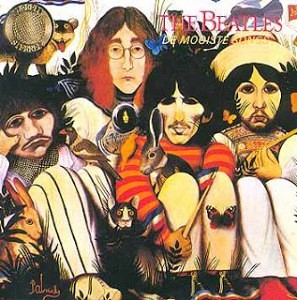
Rejected cover for the White Album. Find out more about it here.
Over on another thread, Anonymous posted the following question, which I thought was meaty enough to merit its own post:
Hey guys, this is way off topic but if you get to it I’d love to hear your thoughts. The White Album was the first major project to use 8 track recording. I’ve recently read somewhere that the engineers were confused about the distinctive sound they produced and went so far as to check the machine. They later discovered it was the solid state mixing board that caused the difference and by Abbey Road had things sorted out. Okay, here’s the question for discussion: Given the different sound output on The Beatles, could it have impacted the negative feelings in the band. If they come back from India, Lennon’s back on drugs and now with Yoko, and they start recording to find radically different – and, I’m guessing, shocking – results, might this have contributed to a sense of frustration, particularly if the engineers kept telling them the machine was working fine? What do you think? Consider, everyone felt good about Abbey Road.
I don’t have any opinion on this—my White-phobia may have made me overlook the recording issues of those LPs. (I do know that Elliott Smith famously tried to recreate the Magical Mystery Tour board in his house here in LA.)
A quick research for this post turned up this great website, called The White Album Project—which yielded the following:
The recorder in question!
The sessions for The Beatles were notable for the band’s formal transition from 4-track to 8-track recording. As work on this album began, Abbey Road Studios possessed, but had yet to install, an 8-track machine that had supposedly been sitting in a storage room for months. This was in accordance with EMI’s policy of testing and customizing new gear, sometimes for months, before putting it into use in the studios. The Beatles recorded Hey Jude and Dear Prudence at Trident Studios in central London, which had an 8-track recorder. When they found out about EMI’s 8-track recorder they insisted on using it, and engineers Ken Scott andDave Harries took the machine (without authorization from the studio chiefs) into the Number 2 recording studio for the group to use.The resulting tracks did not have the same sound as previous Beatles albums had. Thinking that something was wrong with the sound of EMI’s new 3M 8-Track machine (see left), they asked to have a technician check the factory calibration of the machine. The technician using a calibration tape showed the recording engineers that nothing was wrong with the machine, that it was calibrated perfectly to factory standards. The recording engineers were stymied — until they were told by industry professionals that the previous mixing boards at EMI had been valve (USEnglish: tube) powered boards making the earlier Beatles albums sound different. The new mixing boards were the culprit — not the new 3M 8-Track recording machine. It, therefore, took some time before the EMI engineers were able to get the quality of sound they wanted using these transistorized mixing consoles. The EMI engineers were finally able to get the same quality of sound of eariler Beatles albums on Abbey Road.

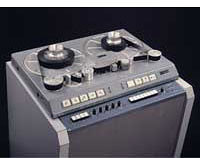

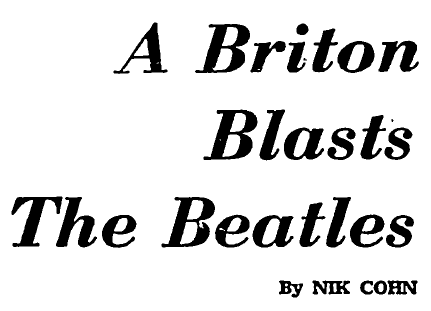
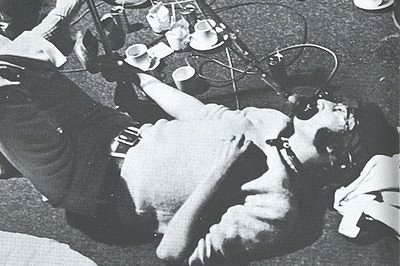
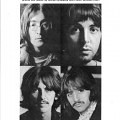
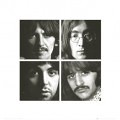
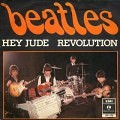
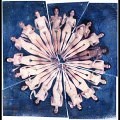
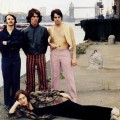
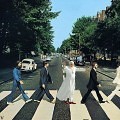

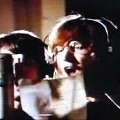
Honestly? I’ve always felt that the fact that John was hooked on smack (and to a lesser degree, joined with Yoko at the hip) during this period was the main source for all the problems/issues. It seems to me that this storyline is frequently under reported and/or just completely ignored; no one likes to talk about a Beatle sniffing Heroin compulsively for months at a time, apparently.
Ever been around a junkie? It’s impossible to trust them or rely on them in any possible way. Now, this doesn’t mean a junkie can’t create fabulous music. ‘Happiness is a Warm Gun’ (and many others) is a testament to that and Lou Reed can probably tell you all you need to know about the intrinsic value in making music while on hard drugs. Better yet, leave Lou alone and just go listen to his aptly named song ‘Heroin’ and decide for yourself whether drugs hindered his process. I’m rambling here, sorry. Point is: John was a complete mess for these sessions and everything went to shit as a result.
-Craig
Craig, well summarized. I’ll add a few thoughts to the mix:
I don’t think it’s possible to separate the drug use from John’s dependence on Yoko at this point: it really seems like two sides of a coin. John was using AND was apparently so weirded out by the idea of being away from Yoko even for a moment that she was following him to the bathroom. Which goes a long way towards explaining the other Beatles’ negative reactions to her, and underlines how disingenuous John was when he blamed them for their reactions.
Also, George’s reaction to India/the Maharisi was deeper than the other Beatles’, and that was another gap opening up.
But underlying everything else — and far, far bigger than any change prompted by shifts in Abbey Road technology, IMO — is Brian Epstein’s death. It’s impossible to say what would have happened if he’d still been around, but his presence would certainly have made a positive difference.
In the end I’m like Michael in not loving the White Album, much as I appreciate a lot of the music on it. The vibe of disunity and decay is just too strong. It’s fitting that it ended up having no pictorial cover. The band was losing its image of itself at this point. John’s right that this was the point of dismemberment, even if he never admitted how much he caused it.
@Nancy,
This: “The band was losing its image of itself at this point.”
That was John’s core Beatle problem from the end of touring on, and what made his reactions to Paul’s commandeering the group so “thank you! fuck you!” complicated.
Perhaps in some part of his drug-addled perceptions, John did think that Yoko could become a Beatle; while at the same time realizing that a Beatles with Yoko really included wouldn’t be The Beatles at all. This explains his behavior from 1968-71 pretty well, I think.
Which brings me to your last paragraph: “even if he never admitted how much he caused it.”
I think he admitted how much he caused it, in the RS interview. “It was my group. I started it. I finished it.”
What John never admitted was how much he WANTED to dismember it. Because—and this is total conjecture on my part, as usual—he knew how wonderful and unique that band was, how it wasn’t really his to dismember, but was driven to do so by ego and anger, sadness and pain. He knew he shouldn’t dismember The Beatles, that it was a bad thing to do. But could not help himself, and the drugs numbed him enough to do it, and he spent every waking moment it seems justifying it, like a child who’s been caught. A child who needs his mummy to protect him after he’s done something naughty.
Then after he’d done it, he mourned it, in different ways, for the rest of his life–and in his better, more active times, when he wasn’t as much a child, and more an adult (1971, 1974-5, 1980) reforming the group was never far from his mind.
All good points. Mostly, what I (and you as well, Nancy, I think) was trying to say is that recording/technology issues were the absolute least of the Beatles problems at this point.
As much as I read this blog and as much as it forces me to think differently about the group and its music, I refuse to capitulate to what seems like the majority consensus on the White Album. I love the White Album. Love love love it. If anything, the discussions on this blog have made me appreciate the album even more. So the Beatles hated each other..’so what?’ they said, we’ll just work alone yet release the music as Beatles music and it’ll still be amazing. That’s how I envision the non-existent inner dialogue running through the groups collective mind.
Don’t get me wrong, listening to Rubber Soul and Revolver and pretty much every pre-Pepper album brings a smile to my face when I picture the guys working together and helping each others songs out for the benefit of the collective group. Teamwork, baby, gotta love it. And as for the collective pall that hangs over the White Album? I’ll take it anytime as long as I can continue to enjoy Prudence, Happiness, Rocky, Julia….I could go on and on.
-Craig
Craig, I actually think the majority of Dullbloggers love the White Album, and I’d guess that the majority of readers do, too. It’s just Nancy and I that seem to find it a downer. But I know I still love a lot of the songs on it.
As usual, you guys are dead-on. The general minimization of drugs as a Bad Thing in the Beatles’ story, plus Yoko cleaning up just about every aspect of John’s life means that the heroin addiction simply isn’t explored. This has all sorts of consequences for understanding what happened to Lennon in the last twelve years of his life, beginning with the White Album. Why were the White Album sessions tense? Could it have ANYTHING to do with the Beatles’ founder and—when and if he wanted the position—de facto leader being a junkie? It’s amazing to me how much this is glossed over in every non-Goldman (which I’ve begun reading) Beatles book. “Oh, yeah, and John had begun sniffing heroin in summer 1968.”
It is impossible to communicate with a junkie, much less to collaborate with one. That Lennon saw his compositions through to completion, at, more or less, his usual high standard (not talking about the songs themselves, just the recordings) is rather impressive, given that across London, you have Brian Jones isolated in a booth playing guitar that isn’t being recorded. But there’s no way that the Lennon-McCartney partnership, even if Yoko weren’t part of the equation, could have continued to function in a healthy way if one half of it were on hard drugs. And, unlike LSD, which seems to have at least had some beneficial effects, the heroin did nothing. Nothing.
Can anyone who was around in 1968 tell me—did you perceive upon listening to the White Album that something was up? Different? Disunified? Because the world thought the Fabs were still the Fabs, right? When I first listened to it, it definitely sounded “off” in that regard to me—no camaraderie—but, of course, I knew they had broken up.
-Michael
I love the White Album, I really do, but I’ve always felt there’s something discomforting about listening to it, unlike anything else the Beatles did. It’s a close, humid August afternoon with threatening rainclouds, compared to the bright, blistering July sunshine of Sgt Pepper and the urgent, breezy, bright spring days of Rubber Soul and Revolver.
Or on a less seasonal theme, I’ve often thought of Revolver, Sgt Pepper and the White Album as the three stages of an acid trip. First, ecstatic, euphoric. Then, reflective, visionary. Finally, paranoid, revelatory.
@Michael, the way heroin has been addressed (or not) in official Lennon product is incredibly depressing, because it shows such horrible priorities. It’s apparently more important to protect certain cherished myths than to tell the truth about the horrible things that drug did to both John’s and Yoko’s lives.
Humans have always, and will always, take drugs; and drugs have a particular attraction to artists, whose perceptions are perhaps particularly sensitive. Certainly perceiving is how they make their living, and new ways of perceiving are particularly interesting to artists. So it’s terribly important that we be honest about each substance, good and bad. Heroin chic is a terrible idea that’s killed untold people, and it can only be built on the lie that YOU can handle it, that YOU will be different, that you can use it, have some fun, then get clean and move on with your life–as John and Yoko did, right? Uh, not right, apparently, but everybody’s quiet about that. They’re quiet about how heroin probably broke up The Beatles, how it probably caused Yoko’s miscarriage in 1968, how it exacerbated John’s visa problems, how it certainly encouraged his isolation and misery in the 70s, and how as late as 1979, Yoko was lying about being clean to John, who reportedly threatened to leave her over it. What is worth all of that? It’s like letting a tiger into your apartment, then after the place is a mess, covered in tiger shit, you’ve lost an arm and two of your friends are dead, you say, “Well, that was my tiger phase, a lot of people had tigers back then. People who don’t own tigers shouldn’t judge…”
I lived in Seattle at the tail end of grunge, and–unlike in the 80s, for example–heroin was everywhere. Most mornings, my nice little street was littered with teenage junkies in band shirts; sallow-faced hollow-eyed runaways begging for change and eating from garbage cans, because they were not lucky enough to be rockstars or wives of same. How many of them were fans of well-known users?
The reason junk isn’t cool in the jazz world any more is because they were ruthlessly honest about what it did to people like Charlie Parker and Miles Davis, and all the others. Stupid-ass rock fans look at people like Clapton and Richards and Reed and say that they survived, so it’s OK. Like it was some sort of necessary external thing, like Elvis going into the Army. Or some brave voyage of discovery, instead of an addiction no more glamorous than Mom’s diet pills, something that twists up your life from the moment you start it. No sane person would choose addiction–unless they had a bunch of ill-informed romantic ideas about what it was and meant, and their own ability to “handle it.” If Yoko wants to have a positive impact on the world, this is where she can do it. On the other hand, she may appear markedly less cool to the hip NY art/fashion/club scenes that have embraced her in the past 10 years.
@Peter, “there’s something discomforting about listening to it, unlike anything else the Beatles did”–YES YES YES! This is EXACTLY what I’ve been trying to express all these years. It’s a great collection of great songs…which always makes me slightly uneasy. “Discomforting” is precisely the right word.
I agree that “discomforting” describes the White Album well. It’s a particular kind of discomforting, as well. For example, I’d say “Tomorrow Never Knows” is rather discomforting, but in a mind-expanding way. Whereas the discomforting I associate with the WA is more about an edge of meanness, even despair, that feels new.
It’s not that the Beatles hadn’t tackled disillusionment and dark themes before: “She Said She Said,” “For No One,” “I’m a Loser,” etc. But “Piggies” and “Glass Onion” display a kind of contemptuousness that IS new to the band. And “Helter Skelter,” even though I’m convinced it’s about sex, is certainly musically menacing.
What I meant earlier when I said that John never took responsibility for breaking up the band was that he never owned up to the part his actions played in the dynamic. Yes, he said he ended the band — but that feels a lot like his “you can’t quick, because I’m firing you!” exchange with Paul.
When he talked about his heroin use (at least what I’ve seen), he said he and Yoko were using to deal with the pain they felt at the time, and laid a lot of that pain at the door of the other Beatles. Two problems here: Serious blame shifting, and not looking at the possible confusion of cause and effect. As we’ve been getting at in this thread, it’s highly likely that part of the reason the other Beatles seemed hostile to JohnandYoko was that they were using, and they were scared of what was happening to John.
Nancy, “contemptuousness” is exactly the word, and John and George are full of it, post-1968. John’s contempt comes from the fact that he’s a “genius” and you’re not; George’s from the fact that he’s found religious truth, and you haven’t. And both men often couch it in this really off-putting “concern trolling” way. And a lot of their rage seems to be directed towards, of all people, their own fans. That “ugly race” that gave them everything they asked for, and more.
There’s also stylistic things at work that emphasize the ugliness. The premium put on “honesty” in rock encouraged a kind of blunt, undigested, unsublimated form that (IMHO) encouraged John and George to be lazy. In 1966, would John have written a song about American Christians called “American Christians”? Yet in 1968, he wrote one called “Maharishi” which basically called out his former guru. It’s not just anger, it’s that there’s a public score-settling aspect.
I know that both John and George routinely used anger as fuel for songwriting (something that Paul did less frequently)—George’s first real song was “Don’t Bother Me”—but there seems to be an overt sourness and score-settling in White and after that wasn’t present before. That’s probably why “Not Guilty” didn’t make the cut, don’t you think? John could dish it out, but could never take it.
I’ve said it a thousand times: The Beatles reflected what was going on around them, to an uncanny degree. 1968-70 was simply a much uglier, rougher, more alienated, more paranoid, more hopeless time than 1964-1967 was, and that was reflected in the music The Beatles made. It’s tempting to dismiss this as revisionism or romanticism, but if you read histories of the time—written then or now—that shift is endlessly remarked upon.
On a lighter note, very recently I thought I’d try to whittle the White Album down to a ‘really strong’ single album as is often mooted, a la George Martin, via an iTunes playlist. Using 14 tracks as the limit and working within the parameters of giving John and Paul a fairly equal showing, as well as the requisite George and Ringo contributions, this is what I settled upon:
Back In The USSR
Dear Prudence
Glass Onion
While My Guitar Gently Weeps
Happiness Is A Warm Gun
Martha My Dear
Blackbird
Piggies
Don’t Pass Me By
Julia
Birthday
Yer Blues
Helter Skelter
Cry Baby Cry
I expect opinions will differ wildly (there are some big songs missing there, obviously), and I happen to be among the people who think the White Album is fine as a double album anyway, but I thought it’d be an interesting exercise.
Even more sacrilegiously, I made an alternative Sgt Peppers including Strawberry Fields Forever and Penny Lane. When I’m Sixty-Four and Good Morning Good Morning were the tracks that made way.
Yes, the White Album has an ungodly amount of contemptuous ‘stink’ seeping from each track. That’s clear to anyone who listens to it while being familiar with the bands earlier work. I don’t disagree with this. All the same, the songs still rock. We’ve got plenty of Beatles albums for bright, sun-shiny days. Let this one be for those who enjoy rainy days and receive comfort in the songs that were clearly written and recorded in trying times.
Peter, while I like your idea and it should probably be its own post, I’m gonna quote from the great Macca and just say:
“It’s the bloody White Album!”
-Craig
I love the White Album just the way it is. It’s big sprawling messiness is precisely what makes it great. There are some tracks I skip on occasion but there’s not a one I’d get rid of. How can you have a White Album without Rocky Raccoon, I Will, Mother Nature’s Son, Everybody’s Got Something to Hide, Savoy Truffle (a song about chocolate! what’s not to like?) , etc. I’d miss them if they weren’t there. Heck I even love Honey Pie and Wild Honey Pie.
On the drugs front: Not that I’m defending heroin at all (I’ve no personal experience with it myself) BUT: Some people say the one good thing heroin did for John was that it got him off acid.
Barry Miles has been quoted as saying that Yoko gets blamed for turning John on to heroin but Miles said that by doing so, she probably saved John’s life. Miles gave a talk in 2010 in the US where he discussed John Lennon’s unusually heavy acid intake around the time of Pepper. He said the Beatles inner circle were really waiting for something bad to happen to John because the acid had made him so extremely paranoid and delusional. Miles said that John’s use of acid was SO excessive that he was absolutely frying his brain. Heroin got him off the acid. And of course introduced many new problems that lasted the rest of his life.
I’m not sure what I think about that theory. I’m just quoting Barry Miles here. But he was there at the time, and good friends with Paul, and I’m guessing Barry Miles knew (via Paul) just how extreme was John’s acid consumption.
— Drew
“It’s the bloody White Album!”
Absolutely. And amen.
I stress it was just an experiment as a Beatles nerd.
I briefly considered making an alternative Revolver with Paperback Writer and Rain before deciding enough, already 😉
Drew, I’d forgotten that take on the LSD-to-heroin thing from Barry Miles. That’s also important in our thinking about this—that it’s not as though John Lennon gave his worst impulses unfettered free reign after discovering Yoko Ono and her philosophies about art and being an artist. It is kind of a wonder that he was basically coherent through 1967 and 1968, given all that LSD. The story about the meeting announcing he was Jesus Christ and the seeing in black-and-white certainly drive that home. Not having anything approaching Lennon’s involvement with drugs, it makes me wonder how much his LSD use and whatever after-effects there may have been affected all sorts of decisions and reactions.
-Michael
“I stress it was just an experiment as a Beatles nerd.”
I’m all for it, but not on the White Album!
It peeves me to no end that the double ‘A’ Side single “Strawberry Fields Forever/Penny Lane” was left off Pepper. “Within You, Without You” is perhaps my least favorite Beatles song – I go back and forth between that and “Old Brown Shoe” and I can’t remember the last time I did not skip that track to immediately get to “64”. Perhaps I’m not pure enough as a Beatles fan. Perhaps this is blasphemy in Beatleworld but Pepper would be infinitely improved by inserting SFF and PL in place of WYWY and “Good Morning, Good Morning”.
I know it’s silly but that’s what I think!
-Craig
@Michael, IIRC the meeting where John announced he was Jesus Christ was mid-1969. Am I misremembering that? When did he announce he was seeing in b/w?
Given the relative addictiveness and lethality of heroin and LSD, color me dubious when it comes to that Miles quote–not that he said it, but that it seems a bit, well, glib. But he certainly knows more than I do about every aspect of this discussion. So it’s a data point, and a really interesting one!
Lennon’s prodigious, indiscriminate, and self-abusing acid use is of a piece with his use of every drug, from alcohol onwards; and what is even more troubling is the mixing that he was doing, via the famous pestle on his mantel. Clearly there was danger of death-by-misadventure during the acid years, but Miles seems to be alone in worrying that Lennon was likely to do himself in at that point. In fact, the acid years seem to be weirdly devoid of any of The Beatles exhibiting the kind of risk-taking or divorce from reality that one saw, for example, with Lenny Bruce or John Belushi as their addictions worsened. To the degree that anybody’s discussed it, Lennon seemed to be MORE functional–more social, creative, and reliable–during ’66 and ’67 than he was in ’68 and ’69.
But if Miles said that, he must’ve had his reasons. He also said that it was Robert Fraser who introduced John to smack, fwiw. I don’t think we know, or will ever know, anything close to the full story. To be honest, I don’t really think I’d want to know–and I don’t usually say that.
I have some experience with LSD from my youth, but none with heroin. I know the positive and negative effects it can have, either of which can be lasting. However, I haven’t seen any real evidence that acid did long-term damage to John. However, if his acid use was as prodigious as he, and others, claimed, and he spent a great deal of his time tripping then he would certainly have appeared worryingly unpredictable to others and, quite possibly, a pain in the arse. It was definitely a good idea for John to stop, but he might not have been in danger as such – and the idea that heroin saved him from acid seems counter-intuitive to me.
(Having said that, it’s not a good idea to drive while tripping, especially when you’re not a very good driver, as is often said of John!)
On the White Album: George Martin’s comment that it should have been one disc reveals, IMO, his limitations as the Fifth Beatle. Martin was unsurpassed at bringing the Beatles’ musical ideas to fruition in the studio. But his musical judgment wasn’t infallible (see his later work on the Bee Gees / Frampton “Sgt. Pepper’s,” and his approving “Ebony and Ivory” on McCartney’s “Tug of War.”)
The fact that every one-disc White Album list I’ve seen is different illustrates pretty conclusively that Martin’s idea of cutting it to a one-disc release was bonkers.
I have nothing against thought experiments / party games of taking the two discs and playing what-if. I’m just glad we have the whole thing to consider while doing so. (I speak as one of the admittiedly few who will stand up for “Ob-la-di, Ob-la-da!”)
@Michael: The “I am Jesus Christ” meeting was, I’m pretty sure, in or around May 1968, sometime after the return from India but before the White Album sessions began. Apparently the way things ended with the Maharishi sent John into a very severe downward spiral upon arriving back in London, and this—now that I think about it—may actually have been what Miles is referring to, because John began some pretty serious, even by his standards, multi-day LSD binges, fueled with more pills than ever and more cocaine than ever. It was around this time that he began doing heroin, too, although whether he had sampled it before is anyone’s guess. Goldman suggests that John was on it before Yoko, although I don’t know where he gets that from—but that contradicts the usual narrative that the couple began taking it together. In a way, it would make sense that John began it in the fall-out of losing another father figure and the demons aroused by returning to his regular life after the India interlude.
In any event, sometime in May, his brain addled by these cocktails, John decided to do two things. First, he had Pete Shotton or Tony Bramwell organize an Apple meeting where he announced he was Jesus Christ, and second, he invited Yoko Ono over to Weybridge in Cynthia’s absence.
I wish I could remember what interview or random quote it was where Lennon boast-admits that at one point he was seeing black and white because he was dosed on so much acid after being awake for so many days, but I don’t. I think it was in reference to sometime around November ’66, the pre-Pepper era.
-Michael
Uh, the new sound from the solid state (TG12345) is the “Abbey Road” sound. The “White Album” sound is the sound of the old valve REDD desks being slammed, overloaded and EQ’d to the max. Plus quite a lot of tape reductions and 4-to-8 transfers (like While my guitar, started out on 4-track and was transferred and finished on 8-track).
The tape machines were probably the most transparent parts of the sound chain.
The Los Angeles Times reports that Ringo is (and this not a big surprise) would like to see the White Album and Abbey Road remixed in the same way Sgt. Pepper was.
.
“I’d like to do the White Album,” Starr said recently, referring to the 1968 double album officially titled “The Beatles.” “I think Giles should redo that. I don’t know why not. And ‘Abbey Road.’
.
http://forums.stevehoffman.tv/threads/ringo-lets-remix-the-white-album.694182/